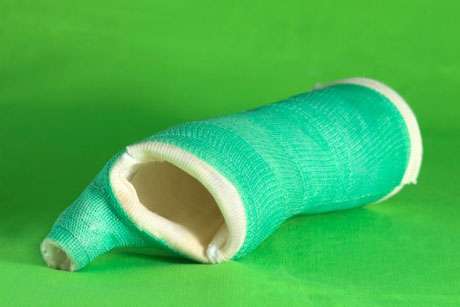New type of rare brittle-bone disease discovered

Researchers from the University of Zurich and University Children's Hospital Zurich have discovered the first X-chromosome-inherited type of the congenital disease osteogenesis imperfecta, also known as brittle-bone disease. The new discovery improves the genetic diagnosis of the disease and paves the way to possible improved treatment options for patients.
Between 300 and 400 people in Switzerland and around half a million worldwide suffer from brittle-bone disease, which causes their bones to break like glass. Not only is their bone formation insufficient; other body tissues containing connective tissue are also affected. Cecilia Giunta and Marianne Rohrbach, both researchers from the Children's Research Center at the University Children's Hospital Zurich, their teams and colleagues from the USA and Thailand have now detected a new type of brittle-bone disease, identifying two families with a total of eight patients in all. The patients suffer from heightened bone fragility, bone deformities and stunted growth. In both families, this new form of osteogenesis imperfecta was caused by two different mutations of the same gene (MBTPS2) in the X chromosome. The disease is inherited in an X-chromosome-recessive manner and affects men and boys as only they carry a copy of the X chromosome.
Simple test in the urine
"Exactly how common the newly discovered disease is remains unclear," says Cecilia Giunta. "That said, it's easy to identify other patients, as we demonstrated that the disease can be diagnosed with a simple measurement of biomarkers in the urine." These biomarkers indicate changes in the crosslinking between the structural proteins in the bone. MBTPS2 encodes a protease, i.e. a protein, which is able to cut and therefore activate other proteins – so-called transcription factors. These activated proteins bind to the DNA and regulate genes involved in the bone and sterol metabolism and the regulation of cell stress. This was primarily shown in zebra fish in 2003. Shortly afterwards, researchers discovered that IFAP syndrome, a group of rare dermatological diseases in humans, is caused by mutations in MBTPS2.
"Surprisingly, mutations in the gene MBTPS2 also cause a completely different disease, namely osteogenesis imperfecta," explains Marianne Rohrbach. The culprit is a change in the bone metabolism, which no longer seems to be impaired in the case of dermatological diseases. Exactly how and why mutations can trigger two completely different diseases in the same gene remains unclear. The team headed by Cecilia Giunta and Marianne Rohrbach are now focusing their research on finding the answer. The scientists hope to gain new insights into bone developments and sterol metabolism, which could one day mean improved treatment options for patients.
More information: Uschi Lindert et al. MBTPS2 mutations cause defective regulated intramembrane proteolysis in X-linked osteogenesis imperfecta, Nature Communications (2016). DOI: 10.1038/NCOMMS11920


















